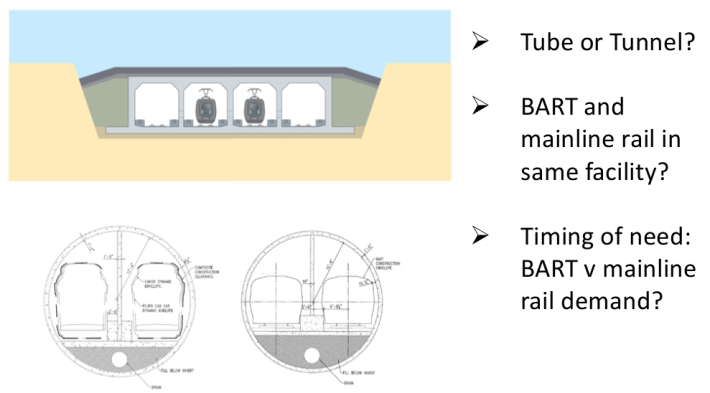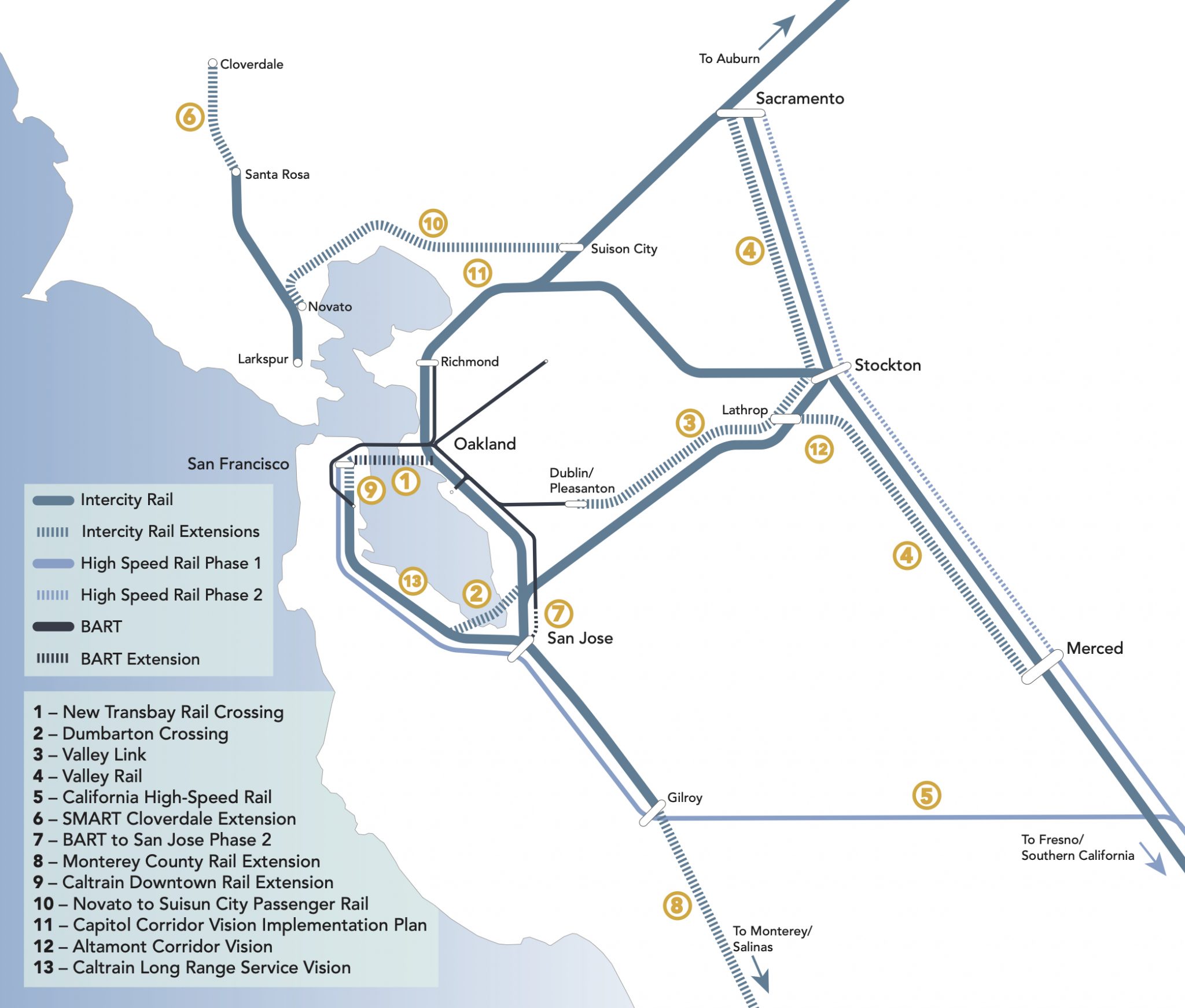In a couple of decades, it may be possible to take a fast electrified train from the Salesforce Transit Center in San Francisco directly to Sacramento.
That was a major takeaway from the Link21 project, a joint planning endeavor of Amtrak's Capitol Corridor Joint Powers Authority and BART. “As we continue to offer vital services to our passengers during these challenging times, we are also looking ahead to the future,” said BART General Manager, Bob Powers, in a prepared statement. Link21, which refers to the 21 counties of northern California, will connect passengers "...to the places they want to go throughout the Megaregion.”
The centerpiece of the plan: a new underwater tube or tunnel to carry heavy rail and BART. Going by previous reports, it seems the project would involve two tracks for conventional rail and two for BART.
"Our most popular travel itinerary is between Sacramento and San Francisco, but that trip currently requires a transfer to either BART at the Richmond Station or to one of our connecting buses at the Emeryville Station," said Rob Padgette, Managing Director of the Capitol Corridor. "By providing a direct rail connection across the Bay that avoids traffic on I-80 and the need for a transfer, this program will dramatically improve how our riders get to and from the San Francisco Bay Area.”

The Link21 announcement was concurrent with the release of “The Megaregional Case for a New Transbay Rail Crossing" from the Bay Area Council. It goes beyond additional underwater tubes under the Bay, arguing for a host of familiar, long-dreamed of improvements, including a new rail crossing at Dumbarton and upgrades to services between San Jose and the Central Valley. It also looks at adding tracks, removing bottlenecks, and, of course, electrification of the existing Capital Corridor between San Jose and Sacramento.

From the portion of the report that deals with Capitol Corridor improvements:
The plan outlines the steps needed to create a dedicated passenger rail-only right-of-way, as that was determined to be a dominant factor in expanding capacity and service levels and enabling electrification. The cost of the plan is broken into phases based on the segments, totaling $15.8 billion over several decades of implementation.
Rail electrification is, of course, something Streetsblog has covered before--although it seems some kind of legislation in Washington is going to be needed to force the freight railroads to allow electrification of at least some of its track in California. It will also allow easier integration with California's ongoing High-speed Rail project.
The studies include many familiar "wish list" projects for the region. It seems unlikely everything envisioned will come to fruition--just look at the original plans for BART--but the timing with a huge stimulus package coming from Washington seems propitious.
Details on the 55-page “The Megaregional Case for a New Transbay Rail Crossing,” will be presented during an hour-long webinar sponsored by the Bay Area Council on Thursday, February 4, 2021, 11:00 am. For more information about the webinar, visit the Bay Area Council’s website.
The Link21 Program will host a series of public meetings in 2021 to "inform the public and gather feedback about possible program alternatives." An online survey about the Program’s goals and objectives is now open. For more information about Link21 or to take the online survey, please visit the Link21 website.
Readers feeling cynical about another study on a second Transbay crossing might find this video entertaining.






